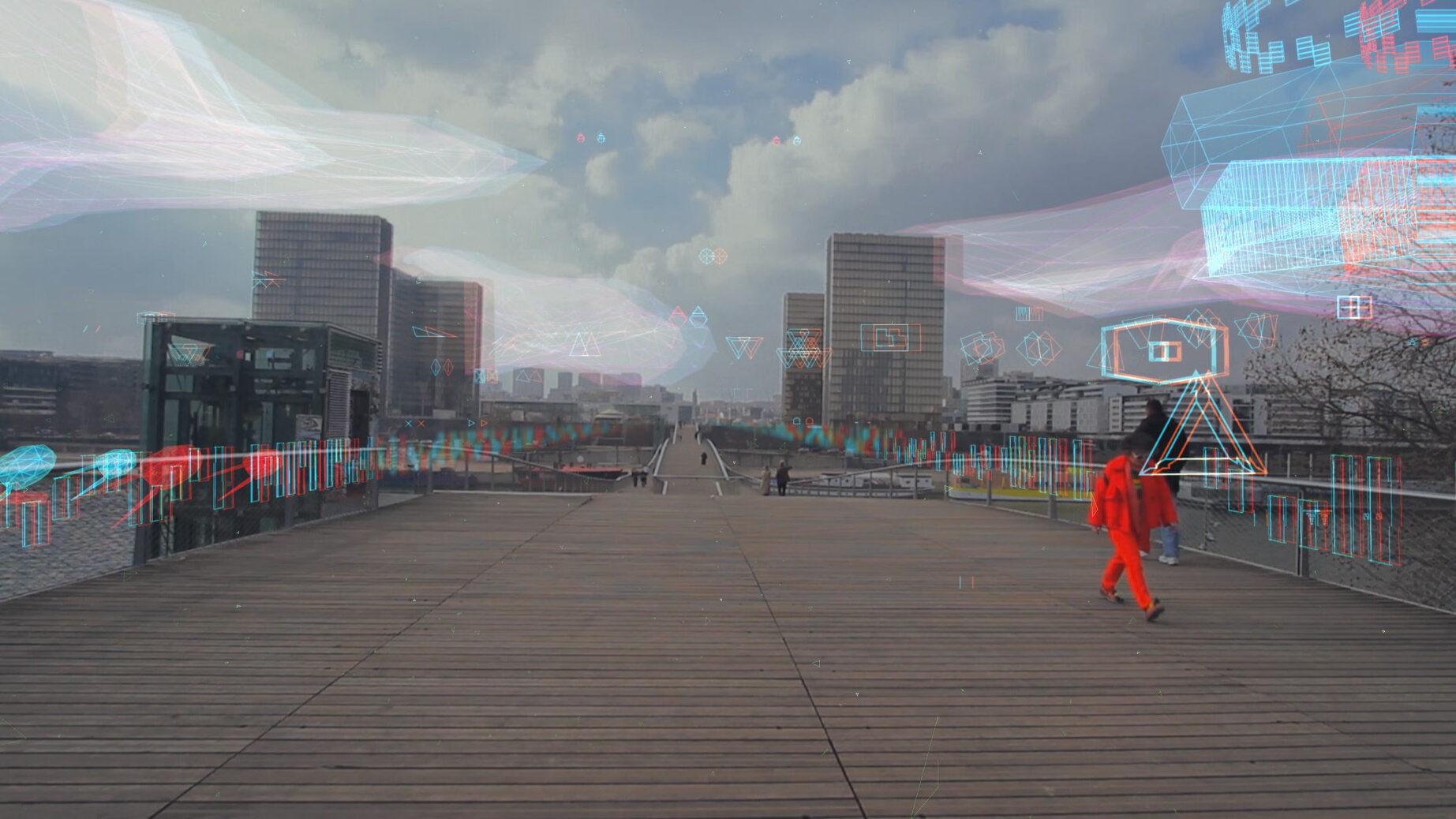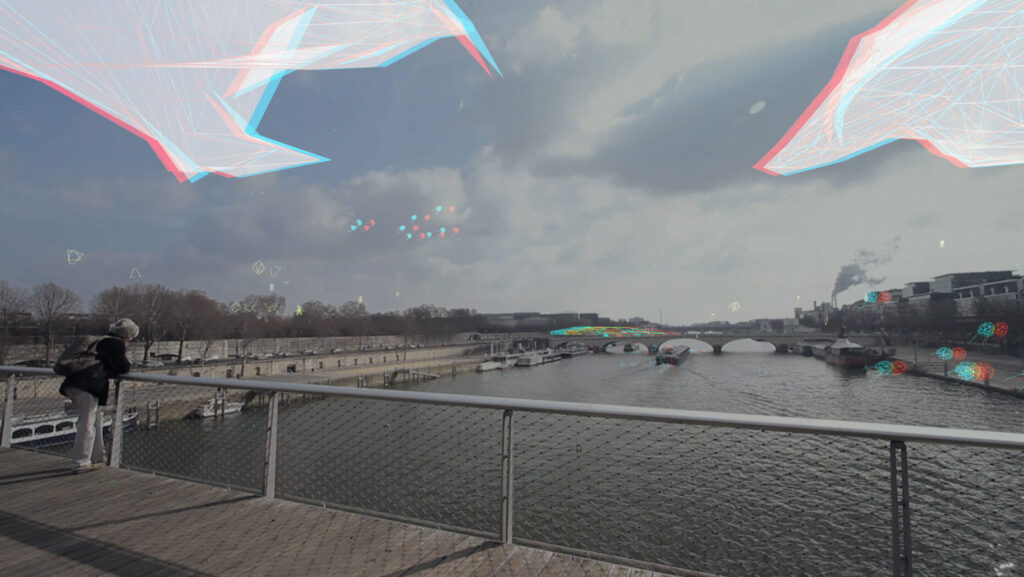A bit of background: ‘Augmented Reality’, or ‘AR’, or whatever you want to call it, is generally understood as a digital layer where information (like interwebs information) inhabits the physical space. It’s like holograms, except you get to see them through a camera, such as your phone’s camera, or better, through some super duper glasses.
This investigation aims at anticipating the evolution of augmented reality into a layer of meaning, self-expression, or even superstition. The technological aspects of AR, and the debate around whether the massively adopted tech is going to be goggles, projections, or lenses doesn’t interest us so much here. Rather, we wish to explore avenues for plausible change should an “extra layer” of reality become a mundane thing.
Assuming we’re to expect a constant overlay on everything we see, how will this digital world of meaning inhabit the public space? With the processes available to visualize this new layer, will we be trying to trick the eye into believing things that aren’t there, or will we simply witness a true augmentation of the real, functional world, dressed in its own semantic layer?
For a better experience, put on some of those red-blue shades, get real close to the screen and play it loud. Then, repeat the experience again, and again, and get used to that effect.


